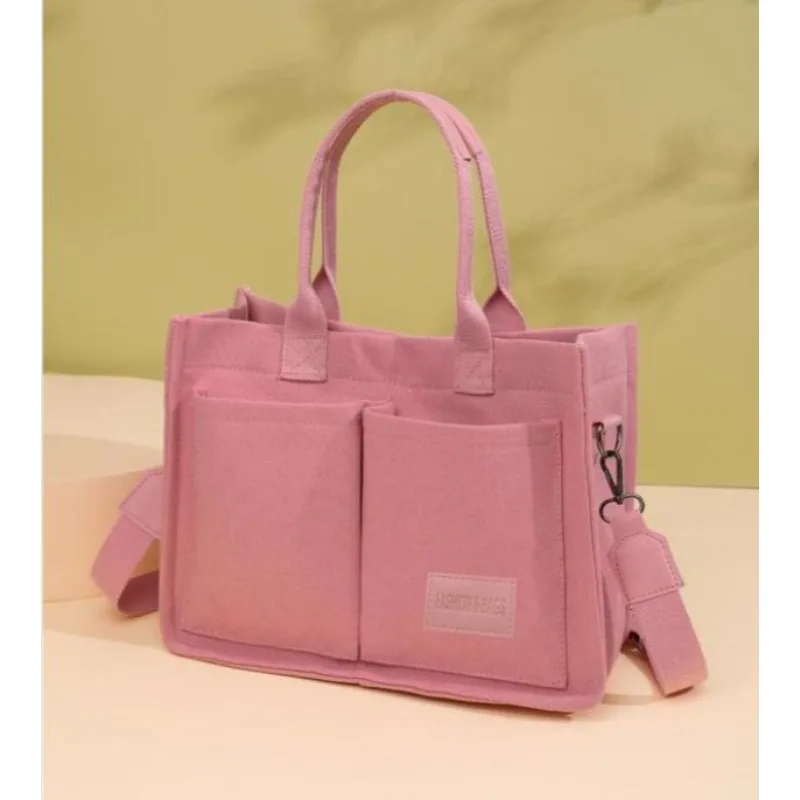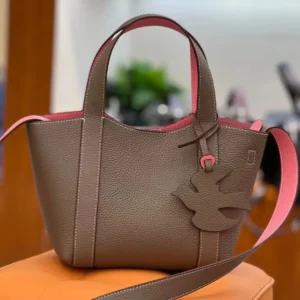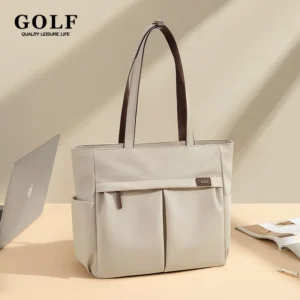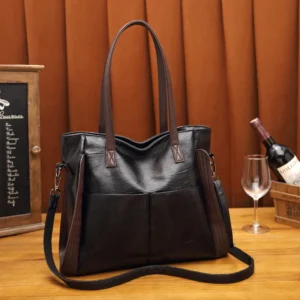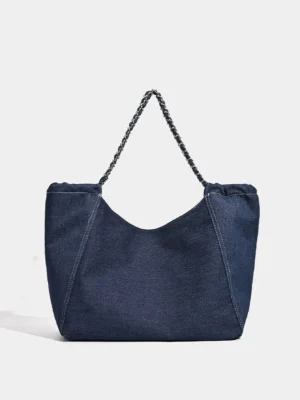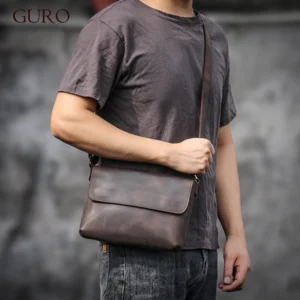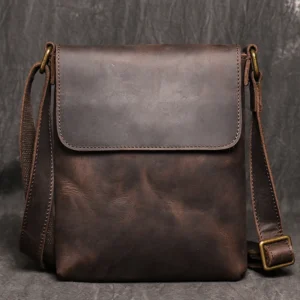Introduction
When choosing a professional bag, the material is one of the most important factors to consider. Leather bags, known for their sophisticated appearance and durability, have been a staple in professional settings for generations. Canvas bags, on the other hand, offer a more casual yet increasingly accepted alternative in modern workplaces. One key difference between these materials that often goes overlooked is weight – canvas bags are typically significantly lighter than their leather counterparts.
The weight of your daily bag might seem like a minor consideration, but it can have substantial impacts on comfort, mobility, and even your physical wellbeing over time. Whether you’re commuting across the city, traveling for business, or simply moving between meetings, the weight you carry affects your daily experience.
In this guide, we’ll explore the specific weight differences between leather and canvas bags, examine why these differences exist, and discuss the practical implications for professionals who carry their essentials daily. We’ll also look at factors beyond material that contribute to a bag’s overall weight and provide guidance on choosing the right option for your specific needs.
Understanding the leather vs. canvas messenger bags comparison is essential for making an informed decision that balances style, function, and comfort in your professional life.
The Weight Disparity: Comparing Leather and Canvas Bags
When comparing leather and canvas bags of similar sizes and styles, the weight difference is often substantial. On average, leather bags weigh approximately 2-3 times more than their canvas counterparts. Here’s a breakdown of typical weight ranges for common professional bag styles:
| Bag Style | Leather Weight | Canvas Weight |
|---|---|---|
| Medium Tote | 3-5 pounds (1.4-2.3 kg) | 1-2.5 pounds (0.45-1.1 kg) |
| Briefcase | 4-7 pounds (1.8-3.2 kg) | 1.5-3 pounds (0.7-1.4 kg) |
| Messenger Bag | 3-6 pounds (1.4-2.7 kg) | 1-2.5 pounds (0.45-1.1 kg) |
| Laptop Bag | 3.5-5.5 pounds (1.6-2.5 kg) | 1.5-3 pounds (0.7-1.4 kg) |
These differences become even more pronounced when comparing specific examples. A classic full-grain leather briefcase might weigh around 5.5 pounds (2.5 kg) when empty, while a comparable canvas briefcase could weigh just 2 pounds (0.9 kg). This means that before adding any contents, you’re already carrying an additional 3.5 pounds with the leather option.
It’s important to note that weight variations exist within each material category. For instance, lightweight lambskin leather is significantly lighter than thick full-grain cowhide, though still heavier than most canvas options. Similarly, thin cotton canvas weighs less than dense waxed canvas, though the latter provides better durability and water resistance.
Bag design also plays a crucial role in the final weight. Minimalist designs with fewer compartments, regardless of material, will naturally weigh less than those with multiple pockets, padded sections, and organizational features.
For a more comprehensive look at how these materials compare beyond just weight, exploring canvas vs. leather bags comparison can provide valuable insights for potential buyers.
Why the Difference? Material Properties Explained
The significant weight difference between leather and canvas bags stems directly from the fundamental properties of these materials. Understanding these properties helps explain why the disparity exists and how it affects the final product.
Leather Material Properties
Leather is derived from animal hide, which naturally has a higher density than plant-based materials. This density is essential for leather’s renowned durability and structure. The tanning process, which transforms raw hide into usable leather, actually adds further weight through the incorporation of oils and treatments that preserve the material.
Different types of leather vary in weight:
– Full-grain leather (the highest quality) is the heaviest, as it uses the entire thickness of the hide
– Top-grain leather is slightly lighter but still substantial
– Split leather and bonded leather are lighter options but sacrifice durability and quality
– Exotic leathers like alligator or ostrich have their own unique weight profiles
Leather requires a certain thickness to maintain its structural integrity and durability. When crafting a professional bag that needs to hold its shape and protect its contents, thicker cuts are necessary, adding to the overall weight.
Canvas Material Properties
Canvas is crafted from plant fibers—typically cotton, sometimes linen or hemp—that are inherently lighter than animal hide. The material derives its strength not from density but from the tight weaving of these fibers, creating a strong yet lightweight fabric.
Canvas weight is measured in ounces per square yard, with typical bag canvas ranging from 12oz to 24oz. Even at its heaviest, canvas weighs substantially less than most leathers. The manufacturing process for canvas involves spinning fibers into thread and then weaving these threads together—a process that creates strength through structure rather than density.
While canvas requires additional treatments for water resistance (like waxing or coating), these add only minimal weight compared to the baseline difference between the materials.
Understanding the leather vs. canvas bag durability relationship helps explain why manufacturers accept the weight trade-off with leather—its natural properties provide longevity and resilience that lightweight materials often struggle to match.
Beyond Materials: Other Factors Affecting Bag Weight
While the core material plays the dominant role in determining a bag’s weight, several other components and construction factors contribute significantly to the final product:
Hardware Elements
Hardware choices can add surprising weight to any bag:
– Solid brass or steel buckles and clasps add substantial weight compared to lightweight aluminum or plastic alternatives
– Metal zippers weigh more than nylon ones
– Protective metal feet on the bottom of bags add both durability and weight
– Chain straps or decorative metal elements can dramatically increase overall weight
A leather bag with premium brass hardware might carry an additional 0.5-1 pound (0.23-0.45 kg) of metal components compared to a canvas bag with lightweight plastic hardware.
Internal Structure
Many professional bags include elements that help them maintain shape and protect contents:
– Internal frames and supports
– Stiffeners in the base and sides
– Reinforced corners and stress points
– Padded compartments for electronics
These structural elements are often more substantial in leather bags, which are designed to last for decades, compared to canvas bags that may prioritize lightweight construction.
Additional Components
Other features that affect weight include:
– Linings (canvas bags often use lightweight synthetic linings while leather bags may feature heavier cotton or leather linings)
– Padding and cushioning
– Reinforced stitching and seams
– Additional layers for weather protection
– Interior organizational pockets and dividers
Construction methods also impact weight—double-stitched seams with heavy-duty thread add durability but also increase weight. Similarly, reinforced stress points prevent tearing but require additional material.
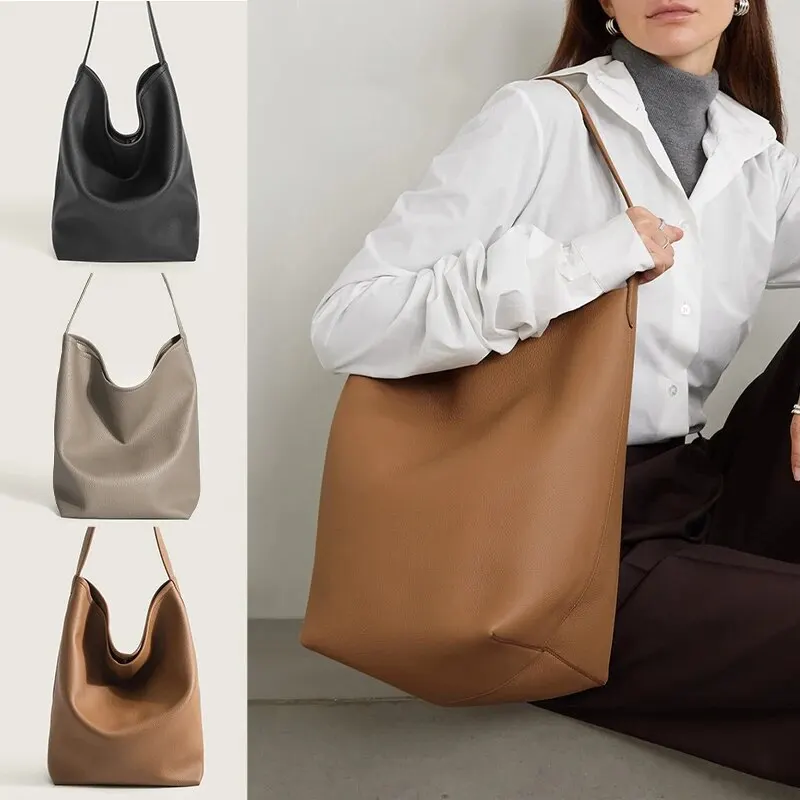
When choosing best messenger bag material, these additional weight factors should be considered alongside the base material weight to get a complete picture of how the bag will feel during everyday use.
Practical Implications: How Weight Affects Daily Use
The weight difference between leather and canvas bags creates meaningful practical implications for daily use. Understanding these effects can help you determine which material better suits your lifestyle and professional needs.
Physical Comfort and Health Considerations
Carrying a heavier bag can lead to several physical issues:
– Shoulder and neck strain from uneven weight distribution
– Back pain from compensating for the additional weight
– Fatigue from carrying extra weight throughout the day
– Potential for repetitive strain injuries with daily use
Health experts often recommend carrying no more than 10% of your body weight in a bag. With a leather bag starting at 3-5 pounds when empty, you may reach this threshold just by adding a laptop, water bottle, and a few essentials. The lighter starting weight of canvas gives you more allowance for carrying necessary items without exceeding comfort limits.
Daily Mobility Impact
Weight affects how you interact with your bag throughout the day:
– Heavier bags require more effort when rushing to catch public transportation
– Lifting a bag repeatedly in and out of cars, overhead compartments, or under desks becomes more strenuous
– Carrying capacity is effectively reduced as the bag’s empty weight consumes more of your comfortable carrying limit
– Maneuverability decreases as weight increases
Specific Scenarios Where Weight Matters Most
The weight difference becomes particularly significant in these common situations:
- Commuting: When walking significant distances or navigating crowded public transportation, every ounce matters.
- Business Travel: Moving through airports, between hotels and meetings, a lighter bag reduces travel fatigue.
- All-day Events: Conferences, trade shows, or days with multiple client meetings require carrying your bag for extended periods.
- Health Considerations: Those with existing back, shoulder, or neck issues may find canvas options necessary rather than preferential.
For professionals seeking the premium look of leather without the full weight penalty, exploring lightweight leather messenger options can offer a middle ground that balances aesthetics with practicality.
Material Showdown: Comparing Leather and Canvas Beyond Weight
While weight is an important consideration, a comprehensive comparison must examine other factors that influence the overall value and utility of leather versus canvas bags.
Durability and Longevity
Leather: With proper care, a quality leather bag can last decades, developing a rich patina that many find aesthetically appealing. Leather naturally resists abrasion and tearing, making it exceptionally durable for daily professional use.
Canvas: Modern canvas bags can be remarkably durable, though typically not matching leather’s longevity. Heavy-duty canvas with quality construction can last 5-10 years of regular use. Reinforced stress points and quality stitching significantly extend canvas bags’ lifespan.
Environmental Resistance
Leather:
– Naturally water-resistant (though not waterproof without treatment)
– Vulnerable to prolonged sun exposure (can cause drying and cracking)
– Resistant to everyday scuffs and abrasions
– Requires conditioning to maintain flexibility and moisture
Canvas:
– Naturally breathable but not water-resistant (requires waxing or coating for water protection)
– Better resistance to UV damage than leather
– More vulnerable to staining without treatment
– Easier to clean but may show wear at friction points
Aesthetic and Professional Appearance
Leather:
– Projects a classic, refined professional image
– Ages gracefully, developing character over time
– Available in numerous finishes from glossy to matte
– Communicates investment and permanence
Canvas:
– Offers a more casual, contemporary aesthetic
– Maintains a consistent appearance over time
– Available in more colors and patterns than leather
– Projects a practical, adaptable image
Maintenance Requirements
Leather:
– Regular conditioning (every 3-6 months)
– Specialized cleaning products
– Storage considerations to prevent drying or mold
– Professional restoration possible for damaged areas
Canvas:
– Simple cleaning with mild soap and water
– Occasional reproofing for water-resistant varieties
– More forgiving of improper storage
– Often machine-washable (depending on hardware)
Cost and Value Assessment
Leather:
– Higher initial investment ($200-$1000+ for quality pieces)
– Excellent long-term value when amortized over decades of use
– Potential to become an heirloom item
– Generally retains some resale value
Canvas:
– More accessible price point ($50-$300 for quality options)
– Good medium-term value but typically requires replacement sooner
– Lower maintenance costs over its lifetime
– Minimal resale value
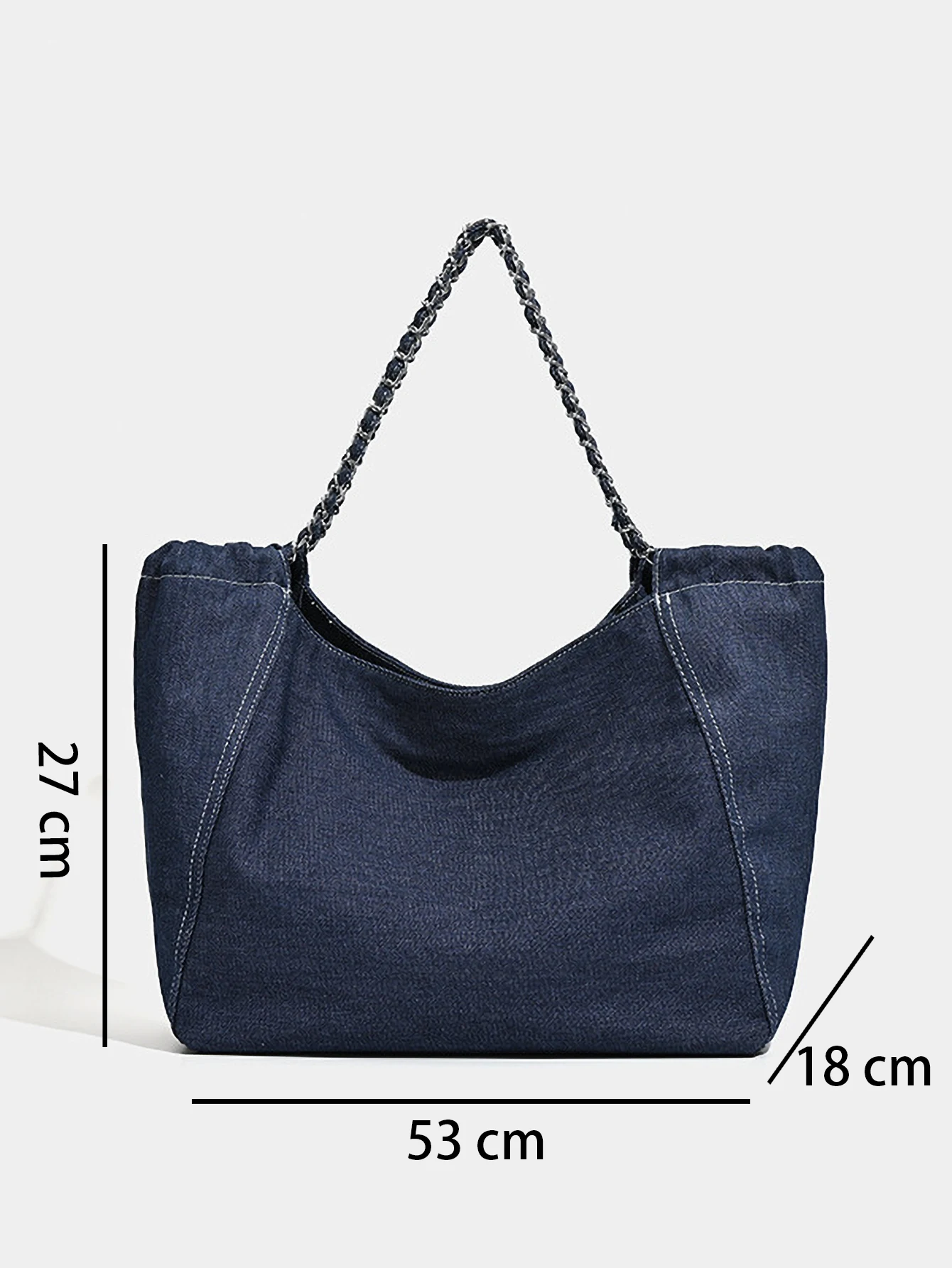
For professionals seeking lightweight options without compromising on style, exploring modern professional non-leather work bags can reveal how contemporary canvas designs are increasingly accepted in professional settings.
Choosing the Right Material for Your Needs
The decision between leather and canvas ultimately depends on your specific priorities, lifestyle, and professional environment. Here’s a practical guide to help you determine which material best suits your needs.
When Canvas Is the Optimal Choice
Canvas bags are particularly well-suited for professionals who:
– Commute by foot, bicycle, or public transportation
– Travel frequently for business
– Have existing back or shoulder issues
– Carry heavy equipment like laptops, tablets, and chargers
– Value lightweight functionality over traditional aesthetics
– Work in creative, tech, or casual professional environments
– Need to carry their bag for extended periods
– Have sustainability concerns about animal products
Canvas offers a practical solution when mobility and comfort are your primary concerns, without sacrificing professional appearance in most modern workplaces.
When Leather Is Worth the Extra Weight
Leather bags remain the preferred choice for professionals who:
– Work in traditional corporate, legal, or financial settings
– Prioritize long-term investment over immediate comfort
– Value the natural aging and patina development of leather
– Attend formal meetings or presentations regularly
– Use vehicles rather than walking for their commute
– Appreciate craftsmanship and traditional manufacturing techniques
– Want a bag that can last decades with proper care
– Need a bag that naturally presents a refined, established image
The additional weight of leather is a worthwhile trade-off when the material’s prestige, longevity, and classic aesthetic align with your professional needs and personal values.
Finding Middle Ground
For many professionals, the ideal solution incorporates elements of both materials:
– Hybrid bags featuring canvas bodies with leather trim and handles
– Lighter weight leather varieties like soft lambskin or semi-aniline leather
– Canvas bags with premium hardware and refined design details
– Seasonal rotation between materials based on weather and activities
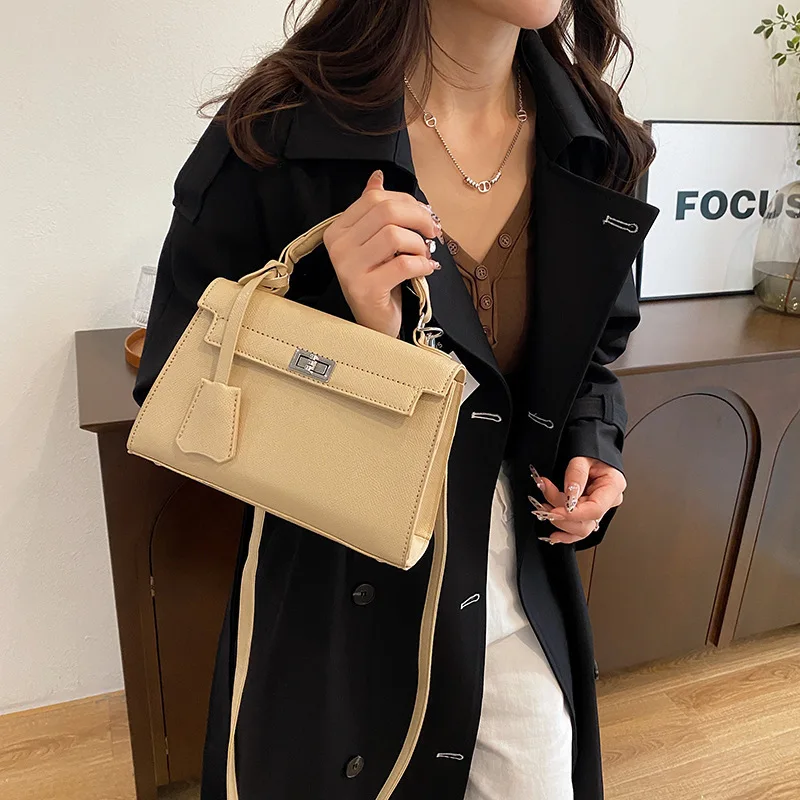
Brown Leather Work Tote, Large Leather Work Tote
$194.38 Select options This product has multiple variants. The options may be chosen on the product pageLeather Laptop Work Tote, Tan Leather Work Tote, Women's Leather Work Tote, Zippered Leather Work Tote
Price range: $223.62 through $237.97 Select options This product has multiple variants. The options may be chosen on the product pageBlack Leather Satchel, Brown Leather Satchel, Vegan Leather Work Tote
Price range: $69.58 through $73.23 Select options This product has multiple variants. The options may be chosen on the product pageCanvas & Leather Messenger Bag, Leather Commuter Tote
$80.41 Select options This product has multiple variants. The options may be chosen on the product pageCrazy Horse Leather Satchel, Men's Leather Satchel, Men's Professional Leather Messenger, Vintage Style Messenger Bag
$132.70 Select options This product has multiple variants. The options may be chosen on the product pageBrown Leather Messenger Bag, Men's Leather Satchel, Men's Professional Leather Messenger
$118.87 Select options This product has multiple variants. The options may be chosen on the product page
Exploring canvas leather messenger bag options provides an excellent middle ground that balances weight considerations with professional aesthetics. For those seeking animal-free alternatives, vegan leather work tote designs offer the appearance of leather with reduced weight. The growing selection of non-leather work bags demonstrates how professional accessories have evolved to meet diverse needs.
Traditional options like leather messenger bags and leather work totes remain available for those who prioritize classic styling and are willing to accept the additional weight.
Supplemental Content: Specialized Considerations
Are there ultralight leather options available?
Yes, several lightweight leather varieties exist that significantly reduce bag weight while maintaining a leather aesthetic. Lambskin and goatskin leathers are naturally lighter than cowhide while remaining durable. Semi-aniline and lightweight finished leathers also reduce weight by using thinner cuts without sacrificing too much durability. These options typically weigh 30-40% less than traditional full-grain leather but come with trade-offs in longevity and scratch resistance.
What exactly makes waxed canvas heavier than regular canvas?
Waxed canvas weighs approximately 15-20% more than untreated canvas due to the impregnation of wax compounds throughout the fibers. This added weight comes from paraffin, beeswax, or synthetic waxes that saturate the material to create water resistance. The waxing process also stiffens the fabric, which can make the bag feel heavier in use even beyond the actual weight increase. However, this treatment significantly improves weather resistance and durability, making it a worthwhile trade-off for many users.
How do different types of leather compare in terms of weight?
Leather weight varies significantly by type:
– Full-grain leather (heaviest): 6-8 oz per square foot
– Top-grain leather: 5-7 oz per square foot
– Split leather: 3-5 oz per square foot
– Lambskin/goatskin: 2-4 oz per square foot
– Vegan leather: 2-5 oz per square foot (highly variable)
These differences mean a bag made from lambskin could weigh half as much as the same design in full-grain leather.
How does the weight difference between leather and canvas change with bag size?
The weight gap between leather and canvas increases disproportionately with bag size. For small items like wallets or card holders, the difference might be just an ounce or two. For medium bags like messengers or laptops bags, leather typically weighs 2-3 pounds more than canvas equivalents. For large items like weekenders or large totes, the difference can expand to 4-6 pounds. This occurs because larger bags require thicker leather to maintain structure, while canvas can remain relatively thin even in larger formats.
Can canvas bags achieve the same professional appearance as leather?
Modern premium canvas bags can absolutely project professionalism, particularly in contemporary work environments. High-end canvas with quality hardware, thoughtful design, and proper construction can create a sophisticated appearance suitable for most professional contexts. Dark colors, minimal external branding, and refined details help canvas bags meet professional standards. While traditional environments like courtrooms or corporate boardrooms may still favor leather, canvas has gained acceptance in most modern workplaces, especially in creative, tech, and forward-thinking industries.

